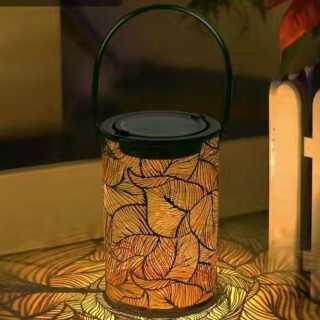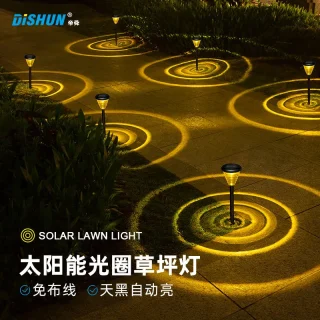As environmental issues increasingly dominate global task, the push for lasting packaging solutions has gathered momentum. Traditional plastic packaging, with its long decomposition period and adverse environmental effect, is being scrutinized and replaced by biodegradable and compostable alternatives. This shift is just not merely a trend but an important evolution in packaging technology aimed at reducing waste along with promoting environmental health. Innovations in biodegradable and compostable product packaging is characterized by ongoing innovations, diverse materials, and growing regulations that together guarantee a more sustainable approach to wrapping.
Biodegradable packaging refers to components that break down naturally through microorganisms into non-toxic factors within a reasonable time frame. Compostable packaging, a subset of biodegradable materials, not only decomposes but also provides nutrients on the soil when processed in a very composting environment. Both forms of packaging offer a significant advantages over traditional plastics, which often can persist in the environment for hundreds of years, contributing to pollution and damaging wildlife.
Recent advancements throughout biodegradable and compostable product packaging have led to the development of several novel materials. One significant innovation is the use of plant-based biopolymers. These materials usually are derived from renewable sources for instance corn starch, sugarcane, as well as seaweed. Polylactic acid (PLA) is a widely used biopolymer made from fermented plant sugars. PLA-based packaging is increasingly widespread in foodservice items like servings and utensils due to its ability to decompose in industrial composting facilities. Another promising biopolymer is polyhydroxyalkanoates (PHA), manufactured by microorganisms that convert natural materials into biodegradable covers. PHAs are versatile and will be used for a range of applications, by food packaging to lawn films.
In addition to biopolymers, breakthroughs in microbial-based packaging materials are emerging. For example , mycelium, the root structure of infection, is being explored as a lasting packaging option. Mycelium can be grown into specific designs and forms, providing a great eco-friendly alternative to styrofoam. The moment used, mycelium-based packaging may decompose naturally within several weeks, leaving no waste right behind. Similarly, chitosan, derived from chitin found in shellfish shells, is utilized to create biodegradable motion pictures and coatings that are each effective and environmentally friendly.
One more area of innovation in biodegradable and compostable packaging will involve the https://www.puebloenpueblo.com/post/23-de-abril-de-1521-mucho-m%C3%A1s-que-una-derrota incorporation of nanotechnology. Nano-engineered materials can improve the properties of biodegradable parts, such as their strength, flexibility, along with barrier properties. For instance, the addition of nano-cellulose fibers can enhance the mechanical properties of bioplastics, making them more suitable for product packaging applications that require durability. These advancements are crucial for developing packaging solutions that not simply decompose efficiently but also satisfy the functional requirements of various industries.
The evolution of eco-friendly and compostable packaging is simply not solely driven by stuff innovation but also by improvements in processing and grasp methods. Industrial composting establishments play a crucial role within ensuring that compostable packaging is usually processed correctly. These amenities provide the controlled conditions essential for optimal decomposition, such as heat, humidity, and aeration. Nevertheless , the availability of industrial composting amenities varies by region, which could limit the effectiveness of compostable presentation solutions. To address this, we have a growing emphasis on developing home-compostable materials that can break down throughout standard home composting techniques, making them more accessible to customers.
Regulatory frameworks and requirements are also evolving to support typically the adoption of biodegradable along with compostable packaging. Governments and also organizations are establishing tips to differentiate between absolutely biodegradable materials and those which merely degrade into microplastics. For example , the American Modern society for Testing and Components (ASTM) and the European Standardization Organization (CEN) have developed expectations for compostable packaging, making sure products meet specific criteria for composting and biodegradation. These standards help buyers and businesses make well informed choices and promote the introduction of high-quality, environmentally friendly packaging alternatives.
The economic aspects of biodegradation and compostable packaging are generally another important consideration. While all these materials offer environmental gains, they often come with higher manufacturing costs compared to traditional parts. As demand for sustainable presentation grows, economies of level and technological advancements are anticipated to reduce costs and make biodegradable and compostable options considerably more competitive. Additionally , incentives and subsidies from governments in addition to organizations can help offset charges and encourage the adopting of sustainable packaging options.
Consumer awareness and desire are driving the change towards biodegradable and compostable packaging. As more people become aware of the environmental impact regarding plastic waste, there is improving pressure on businesses to consider sustainable practices. Companies are replying by exploring and purchasing biodegradable and compostable wrapping options. For instance, major food and beverage brands are incorporating compostable materials into their presentation, and retailers are offering solutions with environmentally friendly packaging options. This shift is not only pushed by consumer preference but additionally by corporate responsibility and the desire to align with durability goals.
Looking ahead, the future of biodegradable and compostable packing is poised for persisted growth and innovation. Scientists and companies are exploring fresh materials and technologies that will further enhance the environmental important things about packaging solutions. For example , the development of edible packaging, made from materials like seaweed or hemp, represents a novel ways to reducing waste. Additionally , developments in packaging design along with production processes are likely to increase the functionality and performance of eco-friendly and compostable materials, making them suitable for a broader variety of applications.
As the industry evolves, collaboration between researchers, companies, policymakers, and consumers will likely be essential for advancing biodegradable in addition to compostable packaging solutions. Carried on investment in research in addition to development, coupled with supportive regulating frameworks and consumer wedding, will drive the development needed to address the obstacles of plastic waste and create a more sustainable future.
Innovations in biodegradable and compostable product packaging is marked by exciting advancements and growing re-homing. Innovations in materials, control methods, and regulatory standards are paving the way for further sustainable packaging solutions. Seeing that technology and consumer choices continue to evolve, biodegradable and compostable packaging options are fixed at play a crucial role throughout reducing environmental impact along with promoting a circular overall economy. The ongoing commitment to research, advancement, and collaboration will ensure these solutions become an integral part of a far more sustainable packaging landscape.






Leave a Reply